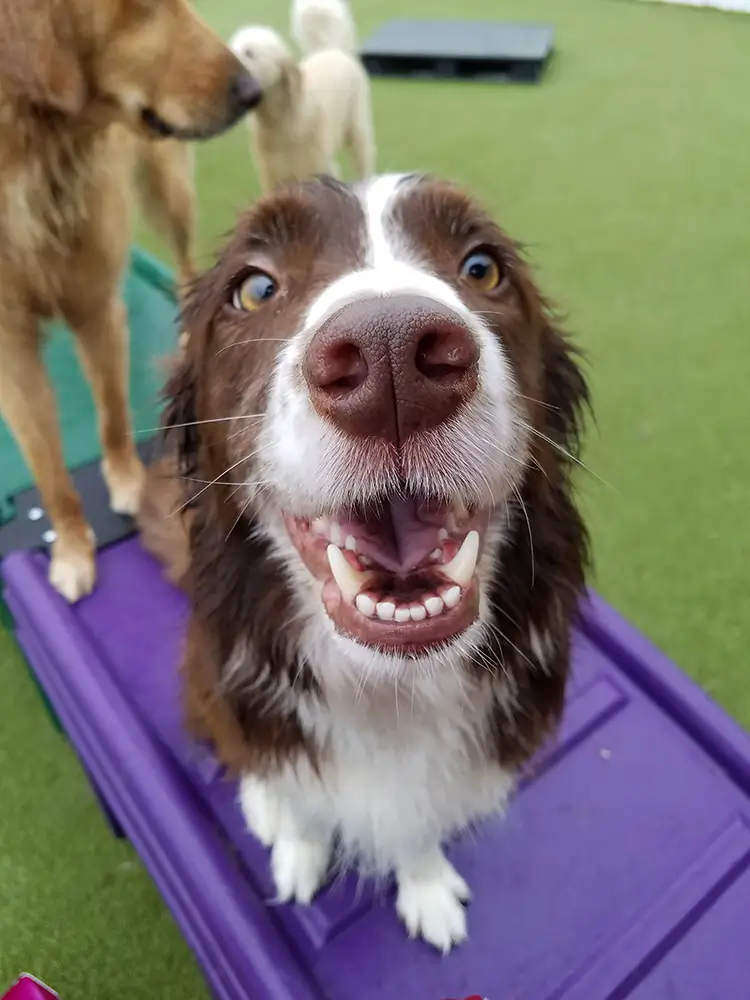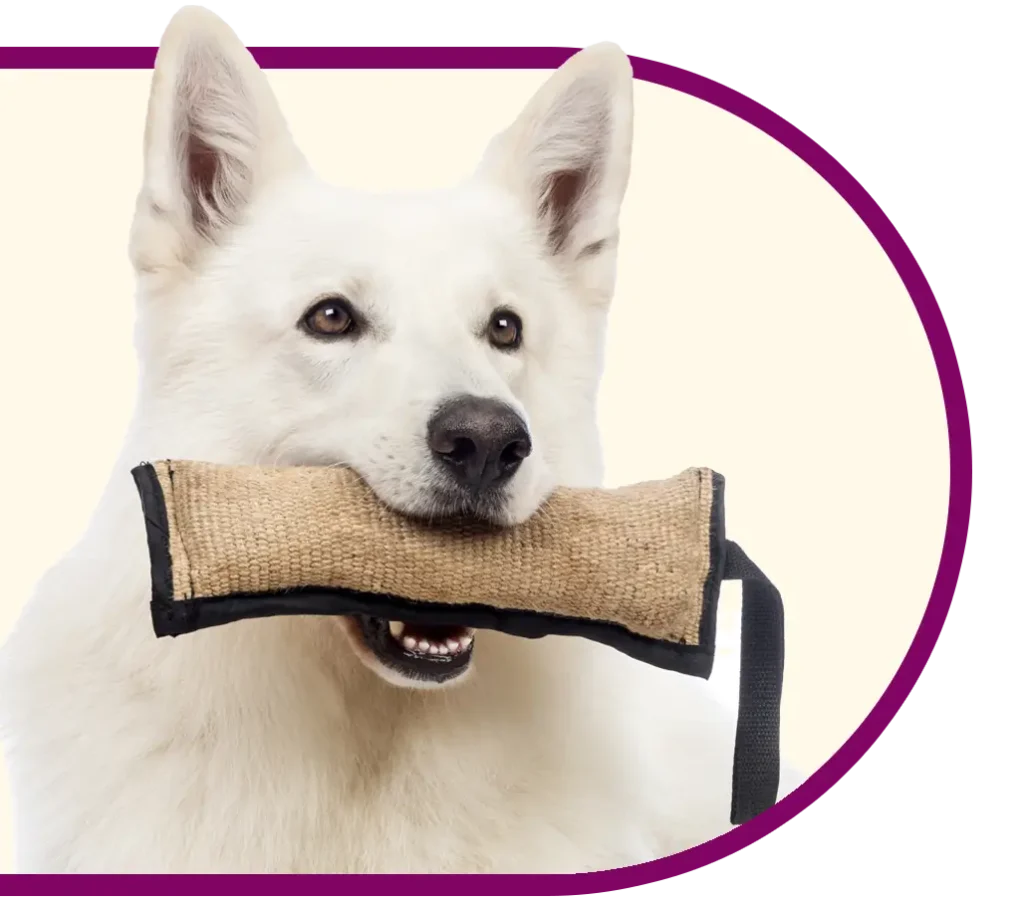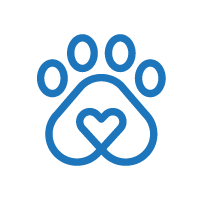Boarding & Daycare Individual Certification Program
The Fear Free Boarding and Daycare Individual Certification Program will help you ensure you are thoughtful in every interaction with boarding and daycare pets—from greetings to kennel introductions to overexuberance or shyness.

Boarding & Daycare Individual Membership
This membership is designed for pet boarding & daycare professionals. The certification program included with this membership will equip boarding & daycare professionals with the knowledge and tools required to begin implementing Fear Free techniques to help ensure thoughtfulness in every interaction with boarding and daycare pets—from greetings to kennel introductions to over-exuberance or shyness.

Course Overview
The Boarding and Daycare Individual Certification Program will help you ensure you are thoughtful in every interaction with boarding and daycare pets—from greetings to kennel introductions to over-exuberance or shyness. You’ll learn what a Fear Free boarding and daycare environment looks like, feels like, sounds like, and smells like. And you’ll get practical advice on what to do in the moment if a dog or cat struggles when you try to give them needed medications or care, drags you into the play yard, or refuses to enter or leave their kennel. This course was reviewed by the IBPSA (International Boarding & Pet Services Association) and PACCC (Professional Animal Care Certification Council).
Course authors: Mikkel Becker, CBCC-KA, CDBC, KPA CTP, CPDT-KA, CTC, Elite FFCP (Trainer), The Dog Gurus (Robin Bennett, CPDT-KA and Susan Briggs, MA, CPACO), Erin Askeland, MSc, CPDT-KA, CBCC-KA and Nichole TeSelle, KPA CTP, CPDT-KA, FFCP (Trainer)
This course is approved through the following organizations:
- 6 hours of PACCC CEUs
Lesson 1: The Impact of Fear, Anxiety and Stress
After completing this lesson, you will be able to:
- Define Fear, Anxiety and Stress (FAS).
- Explain changes that occur in a body resulting from elevated levels of fear, anxiety and stress.
- Detail ways in which high stress alters normal thinking and functioning.
- Explain some of the ways that chronic stress impacts the body
Lesson 2: Dog and Cat Body Language 101
After completing this lesson, you will be able to:
- Recognize the importance of reading body language signals
- Explain the stress responses known as the “Four F’s”
- Note body language signals indicating rising FAS in dogs & cats
Lesson 3: Considerate Approach
After completing this lesson, you will be able to:
- Define Considerate Approach and give examples of how to employ it while boarding dogs and cats
- State how underlying illness and pain impact the animal’s experience
- Describe common signs of pain in animals
Lesson 4: Gentle Control
After completing this lesson, you will be able to:
- Describe Gentle Control and why it’s important
- Describe three strategies involved in positioning a pet for Gentle Control
- Identify at least two Gentle Control tools and why they are useful
- Explain touch gradient and how it’s incorporated into Gentle Control handling
Lesson 5: Arrival at the Facility
After completing this lesson, you will be able to:
- Create a Fear Free arrival plan for your clients
Lesson 1: Client Intake: What You Should Ask
After completing this lesson, you will be able to:
- Understand what questions are important to get to know your clients and their pets
- Recognize key words or phrases that may indicate how a pet could respond in the boarding environment
- Determine whether a “meet and greet” is the next appropriate step
Lesson 2: Meet and Greet
After completing this lesson, you will be able to:
- Create a space that is safe and low stress to use for initial meet and greets
- Integrate a Fear Free Meet and Greet protocol into initial interactions
- Plan the progression from home, to the meet and greet space, to the boarding/daycare area
- Understand how to introduce an animal to a new environment
- Recount two reasons why meeting the pet prior to their stay is important
- State three ways to reduce pets’ stress when you greet them
Lesson 3: The Boarding/Kennel Environment
After completing this lesson, you will be able to:
- Explain stress-reduction methods to employ in the boarding/kennel area
- List actions you can take to help a cat or dog settle in
- Understand how sights, sounds, and scents impact a pet’s FAS level
Lesson 4: The Importance of Enrichment During the Stay
After completing this lesson, you will be able to:
- Describe why enrichment for pets, especially those who might be stressed while their parents are away, is important
- Give examples of simple enrichment strategies to employ with the pets in the daycare/boarding facility, including food-based, scent-based and exploration-based
Lesson 1: Tips for Facilitating Safe Play
After completing this lesson, you will be able to:
- Understand the two factors that determine success in safe play
- Recall why the evaluations are critical to operating a safe playgroup
- Relate why staff training is important for anyone who is working with the dogs
Lesson 2: Setting Up a Fear Free Group Play Area
After completing this lesson, you will be able to:
- Understand the key safety components to designing a safe environment for off leash play
- Recall the industry standards for space and staffing ratios
- Recount safety issues for toys and playground equipment
Lesson 3: How to Match Appropriate Playmates
After completing this lesson, you will be able to:
- Recall the factors that contribute to the personality of each individual dog’s play style
- Learn how socialization plays a role in whether or not a dog should be in an off-leash play group
- Understand how group play can positively or negatively impact the long-term behaviors of an individual dog
Lesson 4: When and How to Interrupt Play and Interactions
After completing this lesson, you will be able to:
- Explain desirable qualities in effective playgroup supervisors
- Describe the basic tools used to effectively manage playgroups
- Summarize the importance of both use and timing of rewards and praise to most effectively manage dogs in playgroups
- Describe several “do’s” and “don’ts” to managing playgroups
Lesson 5: Common Signs of FAS During Play
After completing this lesson, you will be able to:
- Recognize inappropriate play behaviors and attempt to intervene and redirect prior to escalation
- Recall the importance of watching behaviors of the “other dog” to determine if play is appropriate
- Recognize the top 10 stress signals displayed by dogs during group play
- Identify actions and tools to take when you observe a dog in a state of stress in the playgroup
- Interpret displays of aggression between dogs and explain using appropriate incident language
Lesson 6: Dog-to-Dog Introductions
After completing this lesson, you will be able to:
- Recognize appropriate and inappropriate dog to dog greeting behaviors
- Summarize the multiple goals when screening a dog for group play
- Know the attributes to quickly prescreen a dog for playgroup
- Identify dogs that are not a appropriate for the higher risk group play environment
- Explain the options for dogs that it is determined playgroup or daycare are not a good fit
Lesson 1: Behavior Basics
After completing this lesson, you will be able to:
- Relate why it’s important for boarding and daycare professionals to understand the basics of how animals learn
- Recognize and explain antecedents and consequences that can contribute to a pet’s behavior
- Define classical conditioning, counterconditioning and desensitization
- Describe and give examples of reinforcement and punishment
- Identify antecedents and consequences that may be used to increase or decrease a
certain behavior
Lesson 2: Help for Undesirable Behaviors
After completing this lesson, you will be able to:
- Explain and give examples of capturing, targeting and shaping techniques
- Describe the dangers of using punishment and why it should be avoided
- Understand the importance of reinforcing desirable behaviors
- Demonstrate how positive reinforcement can be used to replace unwanted behaviors such as barking, jumping up, overexuberance/pulling on leash, and more
Lesson 3: Appropriate Training and Walking Equipment
After completing this lesson, you will be able to:
- Describe Fear Free recommendations for walking equipment and reasons for it
- Explain a Fear Free approach to being asked to use aversive equipment
- Discuss with clients the dangers of using aversive collars
- Speak to and help educate clients about recommended walking equipment
Lesson 1: Applying Fear Free to Physical Care
After completing this lesson, you will be able to:
- List two adjustments in approach and interaction to make when taking a Considerate Approach
- Describe two ways Gentle Control tactics help position and stabilize an animal for care
- Describe some advantages and challenges to using a food distraction for handling and care
- Define a “Touch = Treat” approach and describe why it is useful
Lesson 2: Administering Medications
After completing this lesson, you will be able to:
- List some strategies for Fear Free delivery of pills
- State how distractions or Touch = Treat may be used while administering ear or eye medications
- Explain how injections can be given in a more Fear Free way
Lesson 3: Preventing and Treating Stress-Induced Illness
After completing this lesson, you will be able to:
- Elaborate upon how change or lack of predictability can negatively impact pets
- Detail common signs of sickness cats and dogs present when stressed
- List possible options for dealing with stress diarrhea
Lesson 4: Basic First Aid
After completing this lesson, you will be able to:
- Describe the basic bandaging practice for wrapping the leg
- List five signs of heat exhaustion
- List five signs of potential bloat
Lesson 5: Marketing/Using your Certification
After completing this lesson, you will be able to:
- Define key factors important to your Fear Free boarding and daycare business’s mission statement and core values
- List three key rules of marketing
- Identify possible value propositions for potential clients
- Determine strategies to communicate Fear Free to your clients

Member Benefits
Discover the exclusive benefits included with the Pet Sitter Membership. In addition to the applicable certification program, your membership gives you access to so much more!
Additional Courses
Deepen your Fear Free knowledge and earn more CE. Explore all courses here.
Marketing Resources
Download logos, email signatures, social media graphics, and more!
Educational Resources
Peruse client communication handouts, fear, anxiety and stress assets, questionnaires, and more!
Directory Listing
Once individually certified, members have the opportunity to opt-in to be found in our online directory. Find a Fear Free certified professional or practice near you.
Certification Kit
Once individually certified, members are able to order a complimentary gift to celebrate their new certification.
Facebook Community
Join our exclusive, members-only Facebook group to share advice and connect with other Fear Free professionals.
Product Discounts
Enjoy special pricing on products and services that are aligned with our values. View Friends of Fear Free.
Merchandise & Swag
Our online store is exclusive to active members who can purchase merch and swag to promote certification status.
Top 10 Reasons to Adopt a Fear Free Boarding and Daycare Environment
The Fear Free Boarding & Daycare Individual Certification Program is a wonderful educational addition to the pet care service industry. Boarding & daycare facilities will immediately see value in this certification program as staff learns to identify and mitigate fear, anxiety, and stress in pets. The pet owner will be assured that their pets are in the care of professionals who are knowledgeable about the physical and emotional needs of each individual pet. Boarding & daycare facilities will be proud to be considered as “best in care” providers as they promote the wellbeing of their staff and the pets in their care. IBPSA is proud to be part of the Fear Free programs.
— Carmen Rustenbeck, CEO and Founder, International Boarding & Pet Services Association
Requirements
To successfully attain and maintain certification, all members must:
- Pass each online module with a score of 80% or higher.
- Sign and uphold to the Fear Free Pledge, a commitment to follow a humane, emotionally protective code of conduct and ethical standards.
- Keep an active membership.
Pet Professional Membership Pricing
This category of memberships are renewed annually from the date of purchase or date of membership assignment by a Team Administrator. All pricing is in USD. Memberships available within Pet Professional memberships include trainer, groomer, pet sitter, and boarding & daycare individuals. These memberships function independently and cannot be combined.
Number of Members
Annual Renewal
Member Pricing*
Individuals with an existing, active Fear Free membership can purchase any additional pet professional membership for $119. This special member pricing is only available to memberships within the pet professional membership category.









